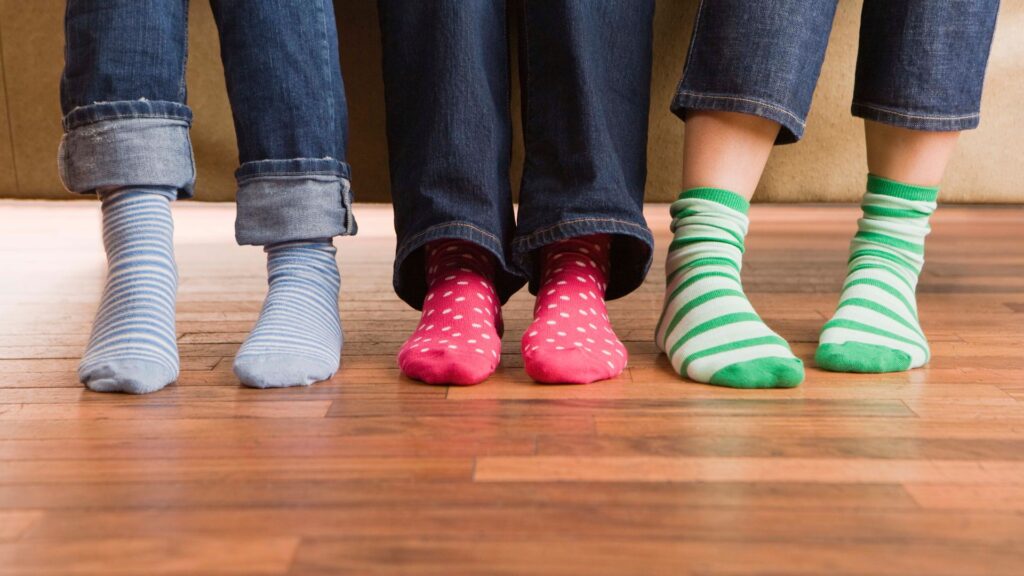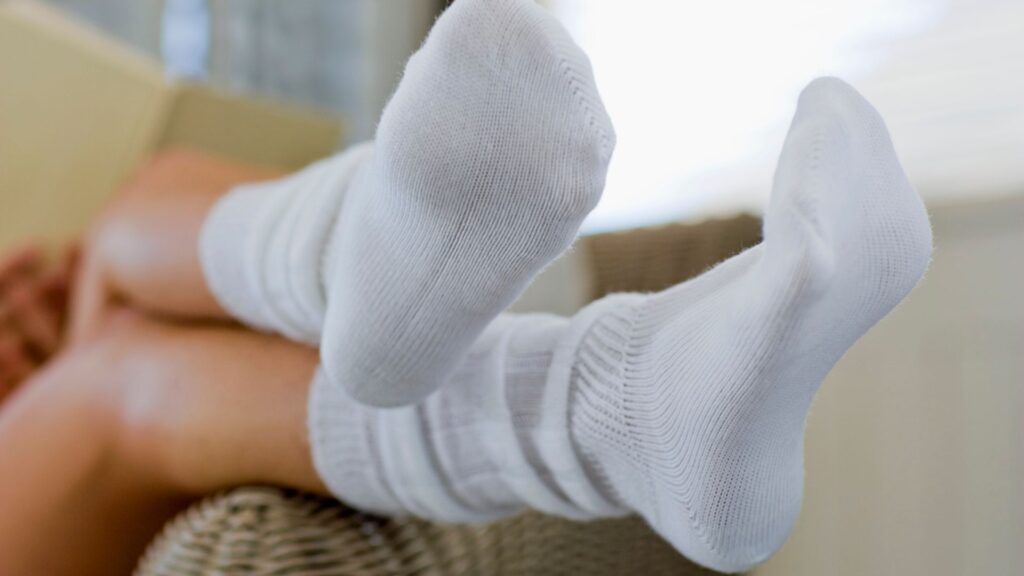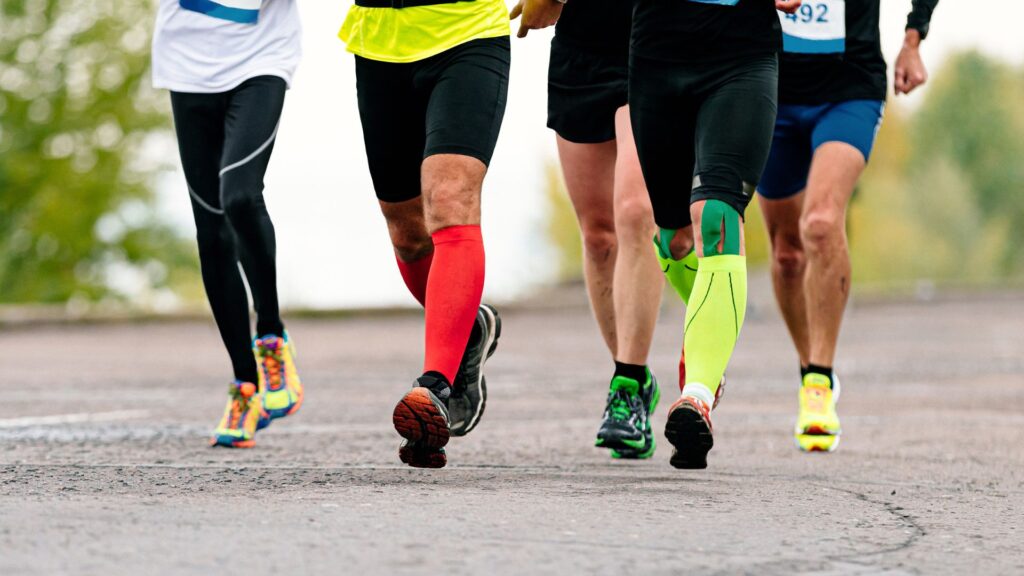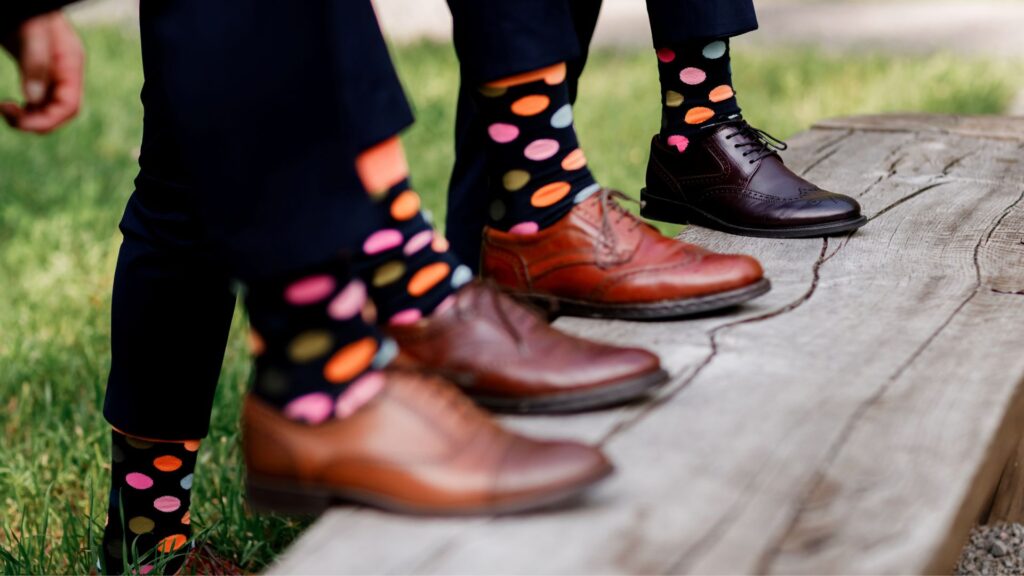Grip socks have become a staple for many, whether you’re into yoga, Pilates, or just want to move around the house with confidence. These socks, equipped with anti-slip features, provide the necessary traction to prevent slipping and sliding on various surfaces. However, with so many options available, finding the perfect pair can be daunting. This article will guide you through everything you need to know about grip socks, helping you choose the best ones for your needs.

1. What Are Grip Socks?
Grip socks, also known as non-slip socks, are specially designed footwear that provides enhanced traction on slippery surfaces. Unlike regular socks, grip socks have rubberized or textured soles that help you maintain stability and balance. These socks are popular in activities like yoga, Pilates, and barre, where maintaining a firm grip on the floor is essential. They’re also widely used in hospitals and homes for individuals who need extra support to prevent falls.
2. The Importance of Grip Socks
Grip socks serve a crucial role in ensuring safety and performance. Whether you’re engaging in a physical activity or simply walking around the house, these socks can prevent dangerous slips and falls. For athletes, grip socks enhance performance by providing a secure footing, allowing for better control of movements. For the elderly or those with mobility issues, these socks can significantly reduce the risk of injury.
3. Types of Grip Socks
There are various types of grip socks designed for different activities and needs. Understanding these types can help you choose the perfect pair:
- Yoga Grip Socks: These are lightweight, breathable socks that provide excellent grip for yoga practices. They usually have a low-cut design and individual toe slots for better flexibility.
- Pilates Grip Socks: These socks are similar to yoga socks but may offer additional arch support and padding. They are designed to withstand the rigors of Pilates workouts.
- Barre Grip Socks: These are often thicker and more cushioned, providing the support needed for barre exercises. They may have additional straps or elastic bands for a secure fit.
- Hospital Grip Socks: Designed for safety, these socks are commonly used by patients in hospitals to prevent falls. They are typically made from soft, absorbent materials with a wide range of sizes available.
4. Materials Used in Grip Socks
The materials used in grip socks play a significant role in their performance and comfort. Here’s a breakdown of the most common materials:
- Cotton: Cotton is soft, breathable, and absorbent, making it a popular choice for grip socks. However, it may not be as durable as synthetic materials.
- Synthetic Fibers: Materials like polyester, nylon, and spandex are often used in grip socks for their durability, elasticity, and moisture-wicking properties. They provide a snug fit and long-lasting performance.
- Bamboo: Bamboo fibers are becoming increasingly popular due to their eco-friendly nature and natural antibacterial properties. Bamboo grip socks are soft, breathable, and moisture-wicking, making them ideal for those with sensitive skin.

5. How to Choose the Right Grip Socks
Selecting the right grip socks depends on several factors, including the activity you’ll be engaging in, your personal comfort preferences, and any specific needs you may have. Here are some tips to help you make the right choice:
- Consider the Activity: Choose grip that are specifically designed for the activity you’ll be doing. For example, yoga socks may not provide the same level of support needed for Pilates or barre.
- Check the Fit: A good fit is essential for grip to work effectively. They should be snug but not too tight, allowing for full range of motion without slipping off.
- Look for Quality Materials: Opt for socks made from high-quality materials that offer durability, breathability, and comfort.
- Evaluate the Grip: The grip pattern on the sole of the sock is crucial for preventing slips. Look for socks with a well-distributed and strong grip pattern.
- Consider Additional Features: Some grip come with extra features like arch support, padding, or moisture-wicking properties. Consider these features based on your specific needs.
6. Benefits of Wearing Grip Socks
Grip socks offer numerous benefits that go beyond preventing slips and falls. Here are some of the key advantages:
- Improved Stability: The enhanced traction provided by grip helps improve stability, especially during physical activities.
- Increased Comfort: Many grip are designed with additional cushioning and support, making them more comfortable to wear for extended periods.
- Hygiene: Wearing grip can help keep your feet clean and protect them from dirt and bacteria, especially in communal spaces like gyms and yoga studios.
- Versatility: Grip are versatile and can be worn for various activities, including yoga, Pilates, barre, and even casual wear around the house.
7. How to Care for Your Grip Socks
Proper care is essential to maintain the longevity and effectiveness of your grip socks. Here are some tips to keep them in good condition:
- Follow Washing Instructions: Always follow the manufacturer’s washing instructions, typically found on the packaging or label. Most grip can be machine-washed in cold water, but some may require hand washing.
- Avoid Bleach and Fabric Softeners: Bleach and fabric softeners can damage the rubberized grip and the fibers of the sock. Instead, use a gentle detergent.
- Air Dry: To preserve the grip and elasticity, air dry your socks instead of using a dryer. Excessive heat can cause the rubberized grip to deteriorate.
- Store Properly: Store your grip socks in a cool, dry place. Avoid leaving them in direct sunlight, which can cause the material to fade and weaken.
8. Common Mistakes to Avoid When Buying Grip Socks
When shopping for grip socks, it’s easy to make mistakes that can lead to an unsatisfactory purchase. Here are some common pitfalls to avoid:
- Choosing the Wrong Size: Always check the sizing chart provided by the manufacturer. A sock that is too big or too small won’t provide the proper grip or comfort.
- Ignoring the Material: The material of the sock affects its durability, comfort, and performance. Don’t overlook this important aspect when making your choice.
- Overlooking the Grip Pattern: The effectiveness of grip lies in their grip pattern. Make sure to choose socks with a well-designed grip that suits your activity level.
- Buying Based on Price Alone: While it’s tempting to go for the cheapest option, quality grip are worth the investment. Cheap socks may not provide the necessary grip or may wear out quickly.

9. Top Brands for Grip Socks
There are several brands known for producing high-quality grip socks. Here are some of the top brands to consider:
- ToeSox: Known for their five-toe design and excellent grip, ToeSox offers a variety of styles for yoga, Pilates, and barre.
- Tavi Noir: Tavi Noir combines fashion and function, offering stylish grip with a strong grip and comfortable fit.
- Gaiam: Gaiam is a popular brand for yoga gear, and their grip are no exception. They provide a reliable grip and are available in various designs.
- Bombas: Bombas offers high-quality grip with a focus on comfort and durability. They are known for their cushioned soles and arch support.
10. Grip Socks for Different Activities
Different activities require different types of grip socks. Here’s a guide to help you choose the right socks for your specific activity:
- Yoga: For yoga, choose lightweight, breathable socks with a non-slip grip. Look for socks that offer flexibility and freedom of movement.
- Pilates: Pilates requires socks with added arch support and cushioning. Look for socks that provide stability and comfort during intense workouts.
- Barre: Barre socks should offer a secure fit with additional padding. Consider socks with straps or elastic bands for added support.
- Everyday Wear: For everyday wear, opt for grip that are comfortable, durable, and provide a good grip on various surfaces.
11. Grip Socks for Special Needs
Grip socks are not just for fitness enthusiasts; they can also be beneficial for people with special needs. Here’s how grip can help:
- Elderly: For the elderly, grip socks provide an extra layer of safety by reducing the risk of falls. Look for socks with a strong grip and comfortable fit.
- Mobility Issues: Individuals with mobility issues can benefit from the stability and support offered by grip . Choose socks with added cushioning and support.
- Post-Surgery: After surgery, patients may need extra support to prevent falls. Hospital grip are specifically designed for this purpose and are often recommended by healthcare professionals.
12. Conclusion
Grip socks are an essential accessory for anyone looking to enhance their stability, comfort, and safety during various activities. Whether you’re practicing yoga, engaging in a Pilates session, or simply moving around the house, the right pair of grip can make a significant difference. By understanding the different types of grip , their materials, and how to care for them, you can find the perfect pair that meets your needs. Remember to consider factors like the activity you’ll be doing, the fit, and the quality of the materials when making your choice.

FAQs
Q1: Can I wear grip socks with shoes?
Yes, some grip are designed to be worn with shoes, especially for activities like Pilates and barre. However, they are most effective when worn without shoes.
Q2: How often should I replace my grip socks?
The lifespan of grip depends on how often you use them and how well you care for them. On average, you may need to replace






Leave a Reply